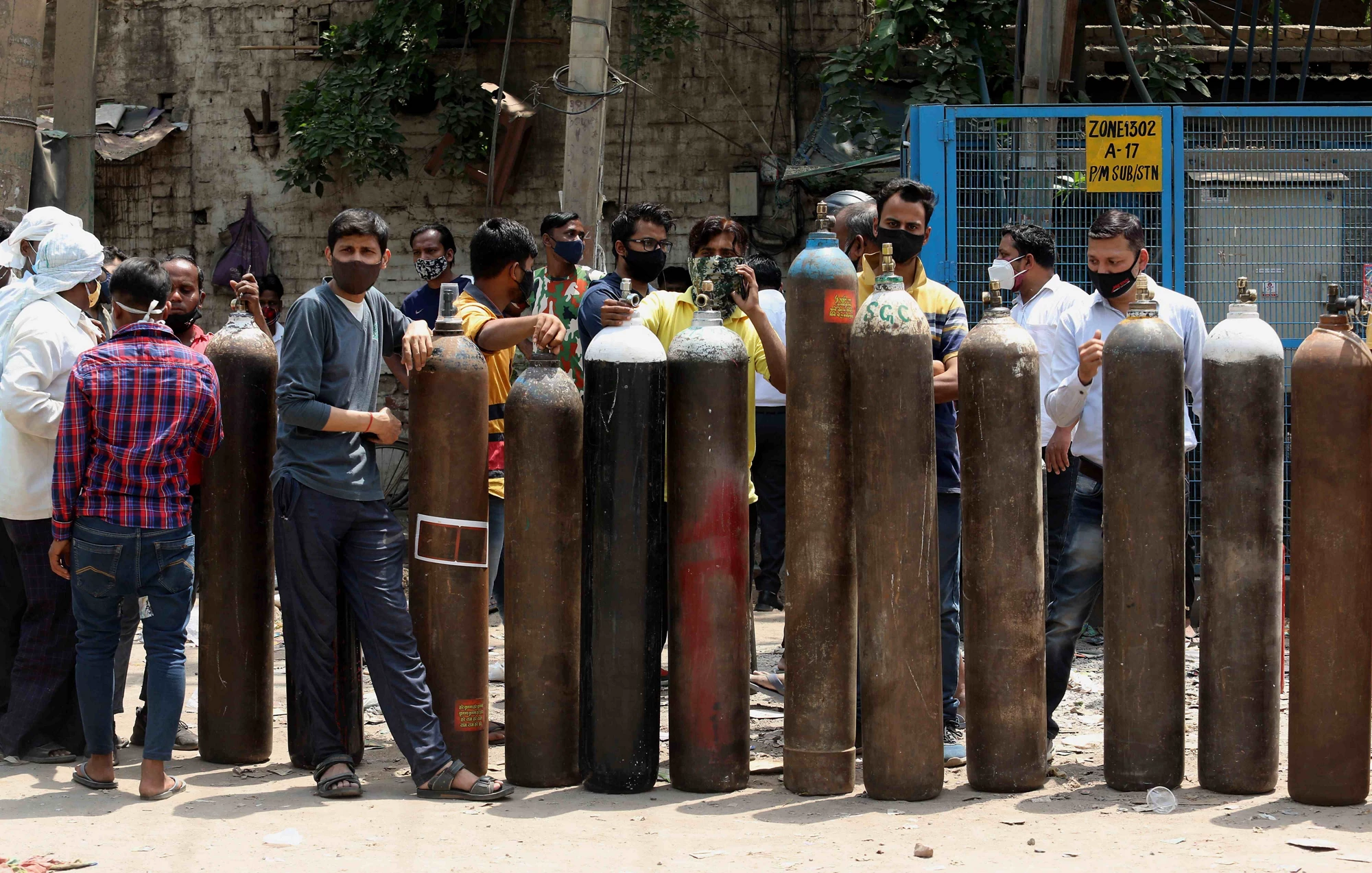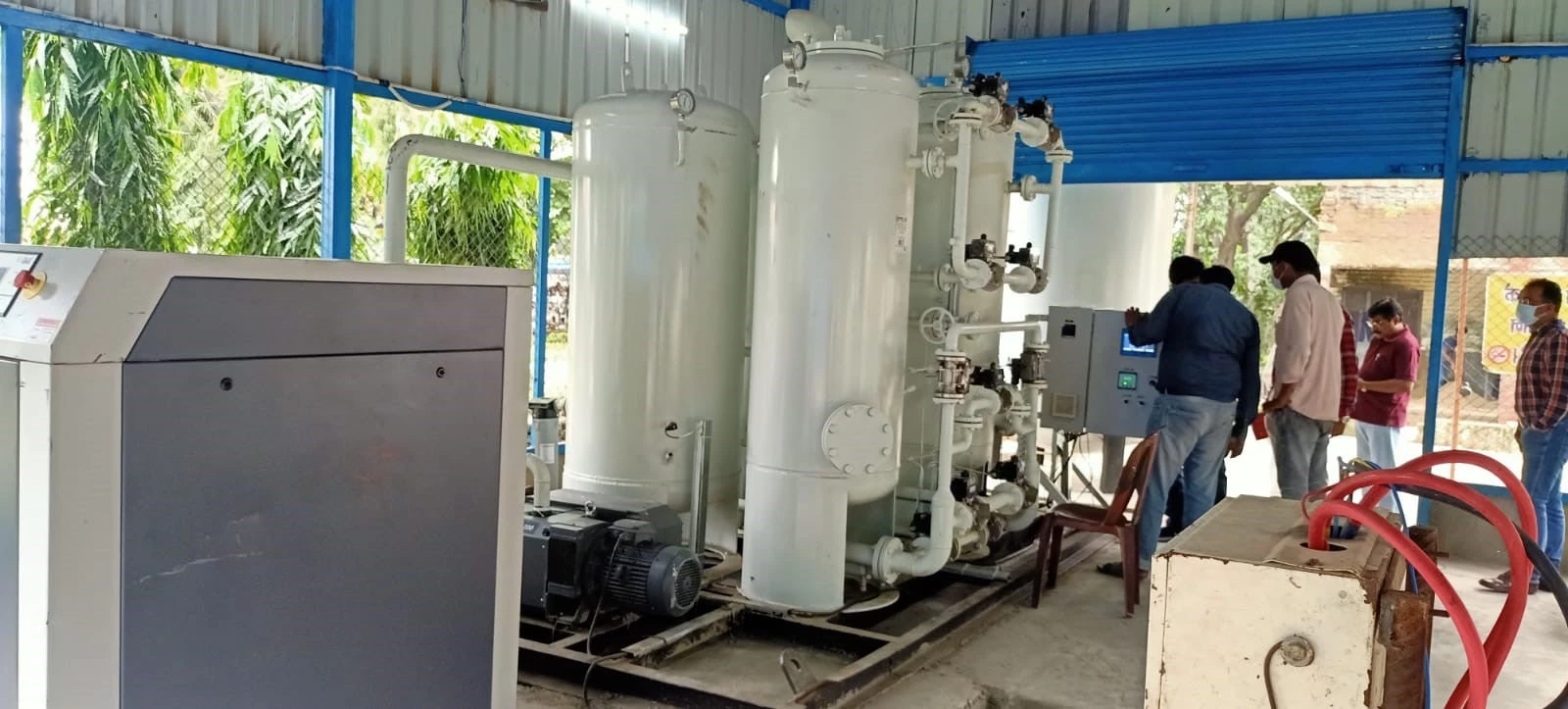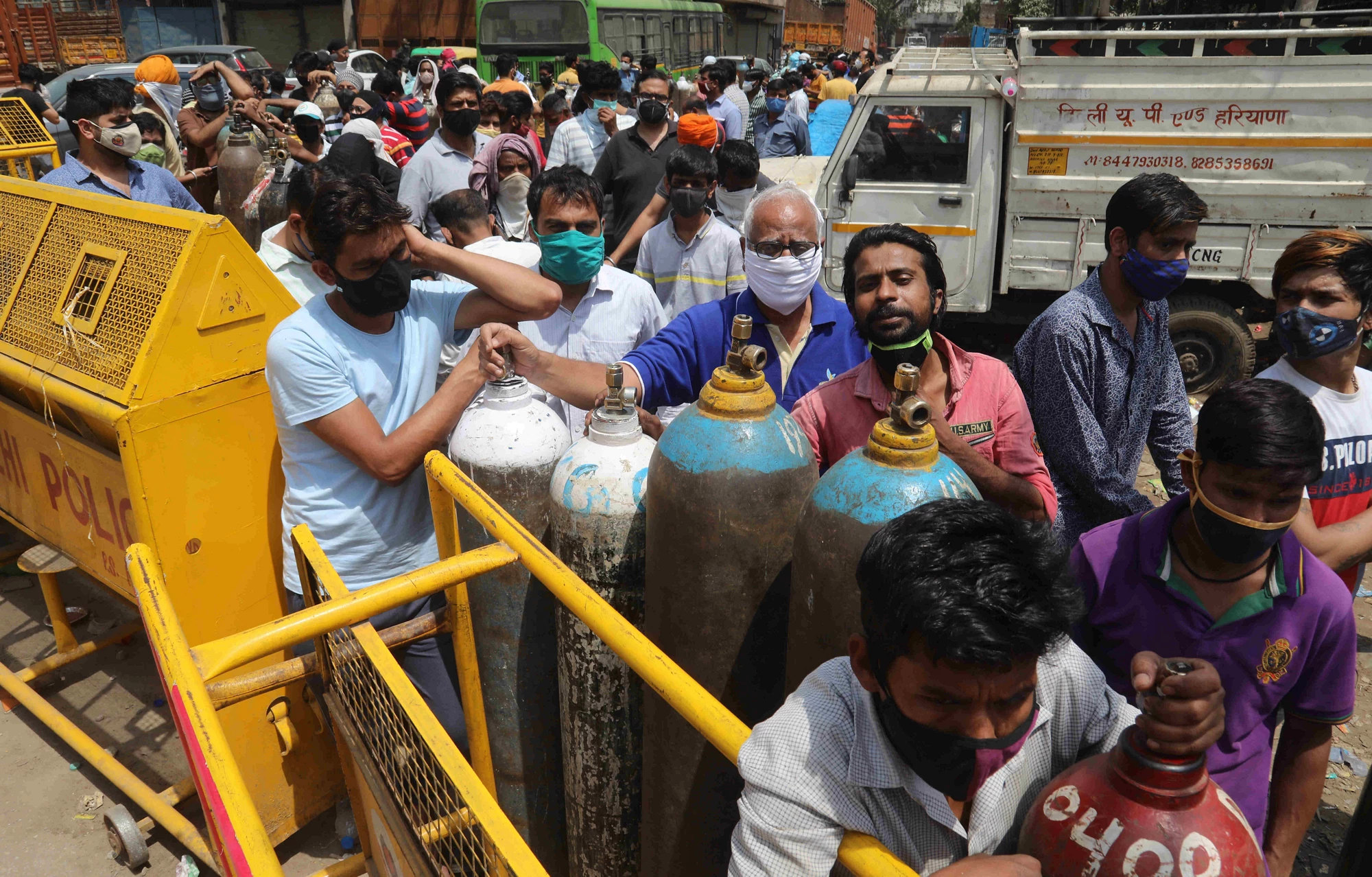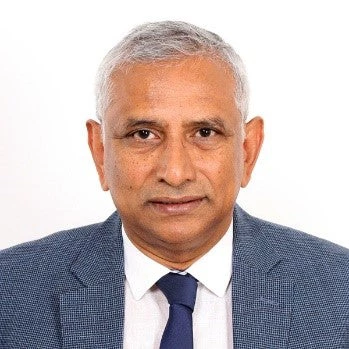 It will be important to increase the production of medical oxygen; ensure plant maintenance; strengthen logistics; create buffer storages; track the movement of oxygen; monitor consumption and forecast demand. Photo: Shutterstock
It will be important to increase the production of medical oxygen; ensure plant maintenance; strengthen logistics; create buffer storages; track the movement of oxygen; monitor consumption and forecast demand. Photo: Shutterstock
In May 2021, India found itself at the global epicenter of the COVID-19 pandemic. As the second wave struck, the demand for medical oxygen soared ten-fold and tragic scenes unfolded as people struggled to access the life-saving commodity.
The sudden surge in demand was compounded by the concentration of oxygen production plants in the industrial belt of eastern India. Only a few hospitals had in-house facilities to produce this precious gas; most depended on oxygen cylinders or liquid medical oxygen (LMO) that was delivered from elsewhere. What’s more, the number of cryogenic tankers needed to transport LMO were too few to cope with the sudden spike in demand.
The government responded in several ways: additional tankers were airlifted from abroad, tankers used for liquid argon and nitrogen were converted to carry oxygen, and the railways innovated to introduce special Oxygen Express trains. In addition, hospitals in over 550 cities and districts were geo-mapped and an online system established to track the real time movement of the commodity.
Industrial oxygen was diverted from steel plants to hospitals. The government expedited the establishment of pressure swing adsorption (PSA) plants—which condense oxygen from the air – and stepped up the procurement and distribution of oxygen concentrators.
How should we prepare for the next oxygen emergency, especially when demand for the gas is unpredictable and the cost of infrastructure to produce, store and transport it is higher than the cost of the product itself?
This experience raises the following questions: How should we prepare for the next oxygen emergency, especially when demand for the gas is unpredictable and the cost of infrastructure to produce, store and transport it is higher than the cost of the product itself? Equally important, how can we ensure better distribution so that oxygen is available wherever it is needed, even during non-emergency times, so that no one is deprived of this life-saving product?
Over the last few months India has been developing a medium-term strategy to achieve oxygen self-sufficiency and national and state governments have made considerable progress.
Based on the learnings from the World Bank’s technical assistance in four Indian states - Andhra Pradesh, Meghalaya, Uttarakhand and West Bengal - as well as with the central government authorities, we spell out a set of options to strengthen the country’s medical oxygen policy:
Increasing production capacity
The central government has funded 1,222 PSA plants through the PM Cares fund, producing 1,750 metric tons of captive oxygen daily. In addition, many plants have been set up in states and through public sector undertakings and corporate sponsorships.
Going forward, it will be critical for the government to harness private sector capacities to produce, store and transport LMO and develop plans to leverage these as and when required. Until now, many medium to large private hospitals (100-200 bedded) have been reluctant to do so due to the large capital investment required to install oxygen plants at their own facilities. Even so, during the peak of the second wave, when the government relaxed regulations for the establishment of medical oxygen facilities at their premises, some large-sized private hospitals did indeed set up their own oxygen production plants.
Now, some states are offering incentives to private companies to set up oxygen plants. For example, under its new Oxygen Production Policy 2021, the Bihar state government provides a 30 percent capital subsidy for establishing plants and machinery. In other parts of the country too, private health facilities will need to be offered subsidized land and utilities, as well as low-interest financing, as incentives for setting up these plants.
Maintenance of oxygen supply infrastructure
Earlier, some government hospitals were equipped with their own oxygen plants but these fell into disuse as maintenance was not done. It is now important to ensure that the phenomenal efforts that have gone into creating captive oxygen plants do not suffer the same fate through the lack of resources for their operation and maintenance(O&M).
Aside from ensuring that these plants continue to have high productive capacity, it will be critical to ensure effective O&M of the whole oxygen supply chain - from plant to bedside. Of the 3,500+ plants being procured in India, the 1,222 plants procured under the PM Cares fund include annual maintenance contracts (AMCs) for five years. To ensure long-term sustainability, all plants, storage tanks and delivery systems will need to be brought under the ambit of similar AMC arrangements.
Shortage of skills to operate and maintain these new plants can be an additional stumbling block. India has already launched a laudable initiative to train 8,000 technicians for the operation and maintenance of these plants. These online trainings now need to be completed with hands-on training. Some states like Andhra Pradesh have also taken the welcome initiative of expanding the skill sets of their people for the maintenance of these plants, as well as of other biomedical and cold chain equipment.
Logistics
During the second wave, the medical emergency was not so much the result of the shortage of medical oxygen, but rather because of the concentration of medical oxygen in eastern India and the inability of the distribution network to ramp up to meet the ten-fold surge in demand. If we are to increase the availability of medical oxygen without creating additional infrastructure that is both expensive and not frequently used, we will need to strengthen our multimodal transport network to link supply centers with demand. Since medical oxygen is relatively cheap while its transportation is expensive, buffer storages will need to be created at strategic locations to reduce delivery times.
In addition, because oxygen cylinders will remain an important mode of supply, the digitization and tracking of these cylinders will be important. A few states are considering this. For example, in Uttarakhand, 30,000 Radio-Frequency Identification (RFID) tags, to be affixed on oxygen cylinders, were distributed to medical oxygen suppliers and hospitals.
Monitoring consumption and forecasting demand
From the experiences and learnings of previous COVID-19 waves, the government, technical partners and private agencies have worked closely to estimate India’s future demand for oxygen. Many forecasting and modeling techniques have been used to develop a deeper understanding of production, demand and storage requirements.
States can now track and ensure the delivery of oxygen at different points along the supply chain with the help of systems such as the Oxygen Demand Aggregation Systems (ODAS) and Oxygen Digital Tracking Systems (ODTS). Artificial Intelligence and digital connectivity can also be used to monitor consumption and forecast demand, enabling a swift response to any potential surges, and managing the tricky last mile logistics. Delhi is one of the states that is making use of this technology to increase the efficiency of the oxygen logistics and supply systems.
World Bank Support
To date, the World Bank Group has provided over $3 billion in support of India’s efforts to combat the COVID-19 pandemic. As part of this, Bank projects at the national and state level are working with India to address critical gaps in its oxygen supply systems.
At the peak of the second wave, the Bank Group worked closely with global suppliers to facilitate the rapid purchase and delivery of 29,600 high quality oxygen concentrators for the country. The Bank also assisted with the sourcing of other oxygen-related commodities within India, such as oxygen cylinders.
And finally, in partnership with the NGO PATH, the Bank provided targeted technical assistance to four states - Andhra Pradesh, Meghalaya, Uttarakhand and West Bengal - to strengthen their oxygen systems and build capacities. It also supported the central government on key transport and logistics issues related to medical oxygen in India.






Join the Conversation